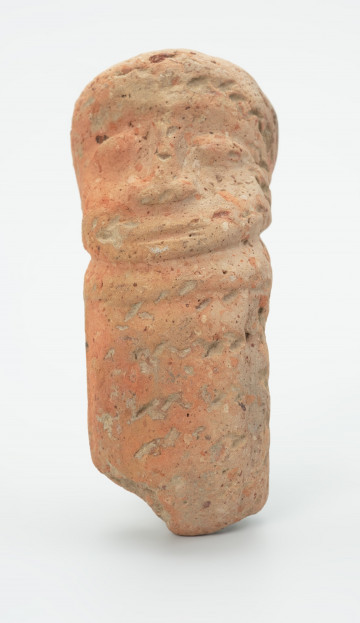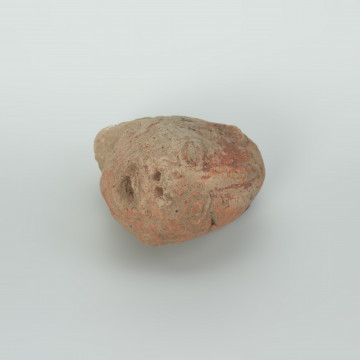
Figure
około 1480
National Museum in Szczecin
Part of the collection: Terracotta from the Niger
Djenne-Jeno, located in the inner Niger Delta in modern Mali, was one of sub-Saharan Africa's first early urban centres. It was founded in the 3rd century BC. It was a region rich in fertile soil and waters abundant with fish, which undoubtedly contributed to the constant expansion of the ancient settlement and more and more people. Initially, the inhabitants of Djenne-Jeno were mainly engaged in African rice cultivation, cattle breeding and fishing. With time, the city developed outstanding specialists in iron and clay processing. The boom of the city took place in the 6th-9th century. The number of inhabitants fluctuated around 20 thousand then. Its successful development was ensured, among other things, by its location on the trade route between the Sahara and the lands south of the Niger River. Local products including dried fish, rice, iron and ceramics were exchanged for stone, copper, salt, glass beads and gold. Djenne-Jeno was abandoned for unexplained reasons in the 14th century. Some experts believe that this was due to the emergence of a new religion, Islam, in the region, but it cannot be ruled out that the reason for the abandonment of old Djenne may have been the ever-expanding population or the relocation of trade to neighbouring medieval Djenne. In 1988, Djenne-Jeno was inscribed on the UNESCO World Heritage List.
Katarzyna Findlik-Gawron
Author / creator
Dimensions
cały obiekt: height: 4,8 cm, width: 3,4 cm
Object type
sculpture
Creation time / dating
Creation / finding place
Identification number
Location / status

około 1480
National Museum in Szczecin

około 1201 — 1985
National Museum in Szczecin

około 1201 — 1985
National Museum in Szczecin
DISCOVER this TOPIC
Museum of King Jan III's Palace at Wilanów
DISCOVER this PATH
Educational path